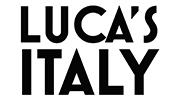Like all carnivals, the Venetian Carnival started as a popular festival in which the people were allowed to let off steam by behaving in ways that they would not have been allowed to outside the period. However, from the earliest times, the Venetian government sought to control the festival and they did this by incorporating large-scale official events into the programme.
During the time of the Venetian Republic (up to 1797), the 31 January was a very important feast as it was the day in which the arrival of the body of Saint Mark in the city was celebrated. According to tradition, in 828 two Venetian merchants—Bono de Torcello and Rustico de Malamocco— who were illegally trading with the muslim city of Alexandria in Egypt, stole the body of the saint from that city to mollify the wrath of the Doge on their return to Venice. It is said that they covered the body with pork, forbidden meat to muslims, in order to deter the authorities from inspecting their cargo on leaving. Their plan worked and Doge Giustiano Participazio was so overjoyed by the arrival of the body that he ordered the building of Saint Mark’s Basilica and the Mark ousted San Todaro as the patron of the city.
In Medieval times, the feast fell right in the middle of the carnival period, which ran from 26 December until Ash Wednesday, and the celebrations were incorporated into the official carnival festivities. Every year, two parishes (or contrade) of Venice were chosen on a rotation basis to lead the festivities. On 30 January, these two contrade would organize processions around the Piazza San Marco to the church of Santa Maria Formosa, where dowry money would be distributed, at the expense of the rich residents of each contrada, to large groups young girls from poor families who wanted to get married.
The next day two more processions would be organized around the Piazza. One contrada would have a priest dressed as the Virgin Mary and another a priest dressed as the Archangel Gabriel. These two priests would come together on a stage and sing a song of praise to the Doge. All participants would again process to the Church of Santa Maria Formosa where there would be a mystery play of the Annunciation (when the Angel Gabriel announced to the Virgin Mary that she was carrying Jesus) followed by a mass.
In the evening, six rich noble families in each of the two contrada (twelve in total) would open up their palazzi to the public to display a wooden statue of the Virgin Mary lavishly dressed and decorated in jewels at the family’s expense. The statues then became the centre of a parties. They would also, on 2 February, be used in the Festa delle Marie, (the festival of the Marys). I’ll be writing about that on 2 February.
The picture at the top of this page, by Jacopo Tintoretto, depicts the body of Saint Mark being stolen from Alexandria by Bono and Rustico. The place in which this is happening, bears a certain resemblance to the Piazza San Marco, with the now demolished Church of San Gimignano at the far end.


Pingback: Festa delle Marie: 2 February | Luca's Venice